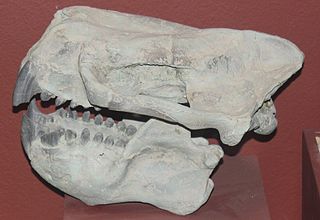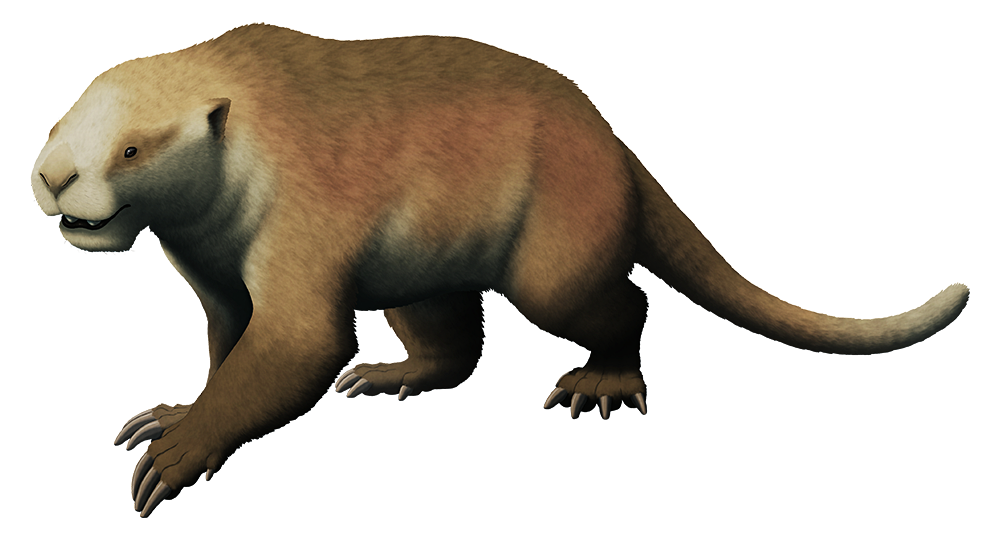In the early Cenozoic mammals were rapidly diversifying and evolving. And while it was the placental mammals that would end up being the most successful across much of the world, they weren’t the first mammal lineage to take advantage of all the ecological niches left vacant in the wake of the end-Cretaceous mass extinction.
The cimolestans were a group of non-placental eutherians – mammals closer related to modern placentals than to marsupials – that very quickly evolved into a wide range of niches during the Paleocene and Eocene, becoming some of the largest mammals of their time and producing forms as varied as squirrel-like, otter-like, ground sloth-like, and hippo-like.
But some of the weirdest of them all were the taeniodonts. Originating back in the late Cretaceous, these herbivorous cimolestans were characterized by short blunt snouts with large front teeth, and limbs with long claws.
Stylinodon mirus here was one of the largest taeniodonts, standing around 70cm tall at the shoulder (2’4″), and was also one of the last of its kind, living during the mid-Eocene about 50-40 million years ago in western North America.
It took the specializations of its lineage to the extreme, with a odd-looking boxy skull with enormous chisel-like ever-growing front teeth similar to those of a rodent – but derived from its canine teeth rather than its incisors.

Its powerful front limbs and large claws were clearly specialized for digging, and for a long time it was thought to be obvious what its diet was – clearly it must have been unearthing roots and tubers from underground, right?
However, closer looks at its teeth raise a problem with that interpretation. That sort of food source should have left numerous telltale marks on the chewing surfaces of its teeth, scratches and gouges and abrasions from dirt and grit mixed in with the roots being eaten.
Yet Stylinodon barely shows any of those wear marks, suggesting that it rarely actually ate those food items. Its tooth surfaces were instead worn very smooth, indicating that it was eating something particularly tough that was constantly “polishing” them as it chewed — but what exactly that food source was is still unknown.
It may also have used its forelimbs to help pull down branches down towards its mouth, stripping off leaves and bark similar to ground sloths, chalicotheres, and therizinosaurs – but it probably did mostly use those big claws to actually dig, just perhaps mainly to construct large burrows rather than to find food.

